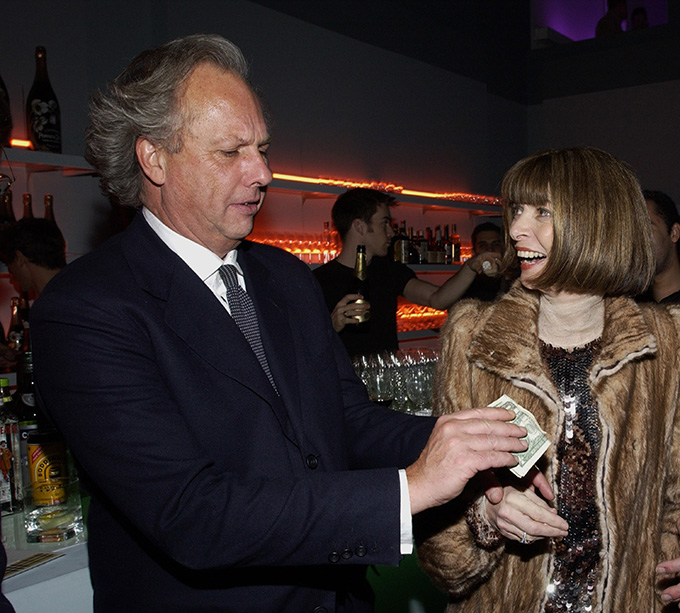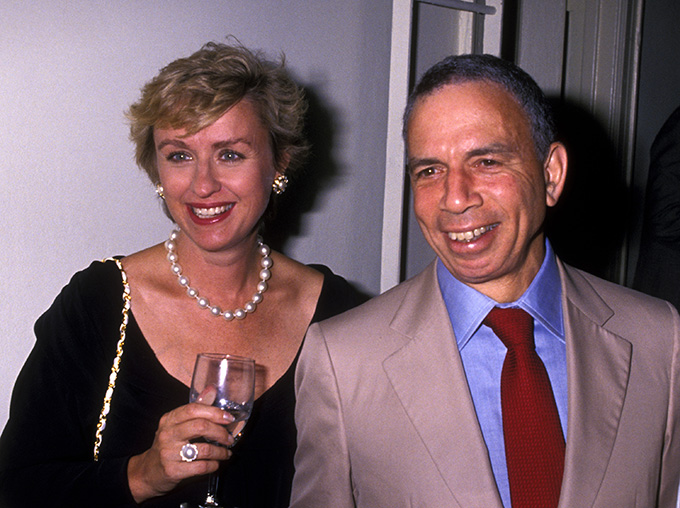Empire of the Elite: Inside Condé Nast, the Media Dynasty That Reshaped America, by Michael M. Grynbaum (Simon & Schuster, 345 pp., $29.99)
In the mid-1980s, an office executive attempted to show Condé Nast editorial director Alexander Liberman, who joined the magazine empire in 1943—the year that one of the foundational concepts for artificial intelligence was articulated—how to use a new digital system. “‘Computers!’ Alex declared, with his usual haughty flourish. ‘It’s just a phase.’” As New York Times media correspondent Michael M. Grynbaum makes clear in his elegiac new history Empire of the Elite, it was no phase.
Finally, a reason to check your email.
Sign up for our free newsletter today.
Grynbaum presents the kingdom, the power, and the glamour of Condé Nast’s magazines—how their arresting photography, transgressive covers, groundbreaking journalism, and visual mystique gave Americans far beyond Manhattan a sense of exclusivity. “Condé Nast was the closest that the late twentieth century had come to reassembling the great Old Hollywood culture factories of the 1930s,” he writes.
From Vogue to Vanity Fair, the company’s magazines had the capacity to enchant a nation of midcentury aspirants. As Gay Talese observed for Esquire in 1961, Vogue offered “a kind of balmy escape for those thousands of female Walter Mittys . . . far, far from the Bronx.” A magazine without budgetary restraints could present the modern with a dash of nostalgia. Though many of Condé Nast’s magazines endure today, Grynbaum captures the bygone black-and-white vitality of an operation that, at its peak late last century, held no regard for frugality in aesthetic expression.
Condé began with its namesake, Condé Montrose Nast, the Missouri-raised grandson of a Methodist preacher. Nast was an outsider who found potential in Vogue, then a tired publication, bought it in 1909, and hired the talent that made it a cultural empire. “He didn’t want a big circulation,” one editor said of his approach. “He wanted a good one.” As Grynbaum writes, this was “the motto from which all of Condé Nast’s future success flowed.”
In 1913, Nast purchased a men’s magazine called Dress and Vanity Fair and shortened it to Vanity Fair. During the Jazz Age, it published art by Picasso and Gauguin and writing by Aldous Huxley and Gertrude Stein. As the late Vanity Fair editor Helen Lawrenson recounts in her memoir, Stranger at the Party, at the magazine in the early 1930s, “just about everyone who was anyone in art, music, literature, politics, sports, the theater, films or the public eye sooner or later came to our offices or our photographic studios.”

Condé’s magazines always ran on illusions—appearance was everything in its glamorous world, which seduced both the middle and upper classes. “I would like to be a top editor in Condé Nast,” said a twentysomething Jacqueline Bouvier, in the early 1950s. By the postwar era, not long after Nast’s death in 1942, competitors like Life and Esquire were emerging; Vanity Fair folded into Vogue in 1936. By the late 1950s, Condé was “remembered with a hazy nostalgia and unmistakable whiff of must,” writes Grynbaum. After a sale to Britain’s Daily Mirror, Condé Nast was acquired by newspaper mogul Sam Newhouse in 1959—the year of the inaugural microchip. Newhouse’s son, Si, whose closest childhood friend was infamous fixer Roy Cohn, forged the Condé Nast style that is best remembered. Through Si, Medici-like in his patronage, “Condé brought discernment to the culture,” writes Grynbaum.
Si Newhouse was a diminutive eccentric. Often dressed in shabby attire, he had a mammoth vision of power and elegance. He had had a complicated relationship with his father, who died in 1979, and found a surrogate in editorial director Liberman, an elegant, Rasputin-like figure who cultivated Newhouse’s aesthetic refinement. In the 1980s, Newhouse borrowed “his father’s methods, investing in money-losing properties and gambling that their untapped potential could yield a profit,” writes Grynbaum. Si envisioned magazines targeted at the upwardly mobile, those young boomers ascending elevators to white-collar jobs in glass towers. He tested the premise in the summer of 1981 with his resurrection of Vanity Fair.
After his first few editors floundered, Newhouse found a keeper in Tina Brown, then overseeing Britain’s Tatler. The role seemed foreordained. In 1977, just 23, Brown wrote a one-act play, Happy Yellow, about a young woman attempting to enter the world of New York magazines. Her protagonist observes, “One’s job isn’t just a meal ticket. It’s an extension of one’s whole personality.” This outlook characterized Newhouse’s subsequent editorial hires, including Anna Wintour, who joined Vogue initially as creative director and later editor. In 1985, Newhouse purchased the graying, WASP-y New Yorker. Old friend Roy Cohn said he had “never seen Si so excited about anything.”
Grynbaum brings to life the personalities behind Condé magazines, including Brown, Wintour, Art Cooper at GQ, and Graydon Carter, named Vanity Fair editor in 1992, when Brown took over The New Yorker. They were all outsiders with lofty dreams influenced by notions of a glamorous past. Chance encounters shaped their magazines’ trajectories. Tina Brown sat next to Dominick Dunne at a dinner and commissioned him to write a powerful piece about the high-profile trial of his daughter’s killer. In a late 1980s meeting about branding GQ, Liberman scrawled the phrase “Very GQ” on a dapper man’s photo. Later, in 1995, when William F. Buckley’s wife, Pat, ended her stewardship of the Costume Institute gala, Wintour revamped the annual event into the extravaganza now known as the Met Gala. Around this time, after the death of talent agent Swifty Lazar—known for his Oscar parties—Carter saved his tenuous position at Vanity Fair when he commenced his own afterparty. And then there was David Remnick, named New Yorker editor in 1998, who read a draft pitched by a freelance writer’s mother. Published a year later, the piece, by chef Anthony Bourdain, reshaped America’s food culture.

Today, the excesses of Condé magazines are well known, and Grynbaum documents the madness behind its unsustainable perks system. “The [Newhouse] family’s regional newspapers had once functioned as financial buffers for the big spenders at the magazines,” he writes, with one executive claiming “that in the 1990s, The Staten Island Advance netted more money than all of the Condé titles combined.”
All the indulgence encouraged technological myopia. In 2007, for example—the year of the iPhone’s debut—Si Newhouse spent up to $150 million on a new business magazine, Condé Nast Portfolio, which included a commissioned photo of a live elephant inside an office. Then the Great Recession hit, newspapers collapsed, and the phones eventually drew inquisitive eyes to Instagram stories rather than magazine spreads. Big cuts at Condé ensued. “Without the decadence and the perks, the smugness and the swagger, the entire edifice of Si’s creation—the illusion that sustained its excesses all those years—came crashing down,” Grynbaum observes. Carter left Vanity Fair in 2017, the year of Newhouse’s death, and launched the digital weekly Air Mail. Remnick remains at the New Yorker; Wintour, still Condé’s global editorial director, recently announced her exit as Vogue’s editor.
As Grynbaum shows, Condé Nast was a kind of revolving door of the twentieth century’s elite—they all wanted to be part of its highbrow/lowbrow scene. Today, one can just turn to Instagram, where algorithms deliver up reels and photos of those analog days. “Everything’s computer,” said Donald Trump, this past March, not long into his second presidential term. Four decades ago, GQ’s Trump cover story, written by Carter, resulted in a bump in circulation numbers—and led, in turn, as Grynbaum recounts, to Newhouse’s idea for a book: what became The Art of the Deal, published by Condé’s Random House. Now, as AI accelerates during the second Trump presidency, many young people yearn for a pre-Internet existence—the kind found in Condé’s magazines.
On Instagram, ironically enough, one can find evidence of Condé Nast’s enduring grip on the culture. There are clips of comedian Adam Friedland on a recreated set of Dick Cavett’s show—where Condé contributors and subjects were regulars—talking to guest Sarah Jessica Parker of Sex and the City, the show whose Mr. Big character was inspired by former top Condé executive Ron Galotti. Meryl Streep is captured filming scenes for the sequel to The Devil Wears Prada, the 2006 film that depicts Condé in its early 2000s glory. Vanity Fair’s recently named global editorial director, Mark Guiducci, unveils images of past issues on his Instagram page. Younger editors and curators seem to have discovered a reverence for the past, just as Brown once bought Jazz Age issues of The New Yorker at the Strand.
“You have to not be afraid of the past,” Jonathan Anderson, creative director of Christian Dior, recently said. “People want history from a brand that has history, but they want it reinvented.” It’s an old story, and it applies to Condé Nast, too.
Top Photo: Tina Brown, then editor of Vanity Fair, and Vogue editor Anna Wintour in 1989, with Rolling Stone editor Jann Wenner and columnist Nigel Dempster (Sonia Moskowitz/Getty Images)
Source link

















